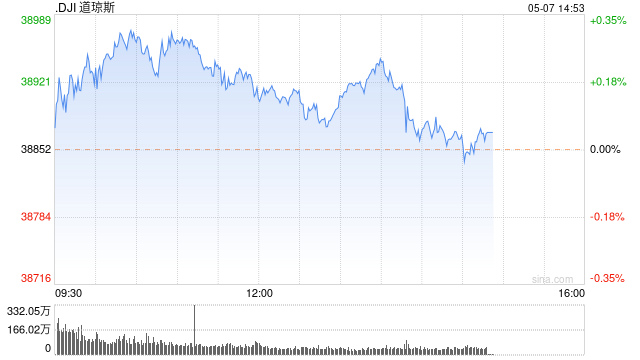党的二十届三中全会提出,科学的宏观调控、有效的政府治理是发挥社会主义市场经济体制优势的内在要求。必须完善宏观调控制度体系,统筹推进财税、金融等重点领域改革,增强宏观政策取向一致性。
2024年以来,财政政策实施力度持续加大,超长期国债供给大幅增加。1―8月,国债发行规模为8.4万亿元,同比增长33%;超长期特别国债发行规模为8220亿元,同比增长257%,在支持办好国家重大战略和重点领域安全能力建设方面发挥积极作用。同时,加快中央预算内投资下达和地方政府债券发行使用,推动经济延续回升向好态势。其间,10年期国债收益率下降39BP,信用利差收窄至历史低位。
货币政策维持支持性立场,为经济持续回升向好提供金融支持,货币政策工具和框架机制也在发生变化。贯彻落实中央金融工作会议要求,2024年8月,中国人民银行开展了公开市场国债买卖操作,向部分公开市场业务一级交易商买入短期限国债并卖出长期限国债,全月净买入债券面值达1000亿元。“买短卖长”操作有助于减缓国债收益率曲线长端单边快速下行趋势,也符合引导短期利率下行的调控目标,能够更好地发挥利率等价格型调控工具作用。
综合我国经济当前稳增长的需要和长远高质量发展的总要求,需要进一步扩大国债发行规模。宏观经济方面,扩大国内需求、改善市场预期、防范金融风险、完成今年经济增长目标等,都需要财政政策持续发力,增加国债供给。金融市场方面,在“资产荒”背景下,市场对于长期限国债配置需求旺盛,增加国债供给有利于促进债券市场供求平衡。此外,国债发行规模扩大空间充足。目前我国中央政府债务总额与国内生产总值的比率不到30%,远低于美国、日本等发达国家。
扩大国债发行规模,需要加强政策统筹协调,完善相应的配套措施。一是通过降准、加大公开市场净投放力度、鼓励商业银行灵活调整准备金等方式,为国债发行提供合理流动性。二是适时适度调整利率,逐步加大公开市场国债现券买卖力度,理顺政策利率和市场利率体系,提升政策传导效率。三是增加利率风险管理工具。进一步稳慎扩大国债期货参与方,适时推出国债期权产品,促进期现联动、稳健发展。四是深化国债市场对外开放。通过境外信息平台与境内一级市场直通安排,便利境外投资者参与国债一级市场认购。

面对世界百年未有之大变局,稳步推进中国式现代化和高质量发展,需要宏观政策的保驾护航。加强统筹协调,增强宏观政策取向一致性,有利于兼顾短期稳定、长期增长和结构优化三大目标,为中国经济高质量发展提供强有力的政策保障。

◇ 本文原载《债券》2024年9月刊
◇ 作者:钟言
◇ 编辑:陈森 刘颖
Strengthening Planning and Coordination and Enhancing the Consistency of Macro Policy Orientation
Zhong Yan
At the Third Plenary Session of the 20th CPC Central Committee, it was pointed out that proper macro-control and effective government governance are the inherent prerequisites for leveraging the advantages of the socialist market economic system. Therefore, it is necessary to optimize the macro-control system, promote the reform in key areas such as finance and taxation, and enhance the consistency of macro-policy orientation.
Since 2024, the fiscal policy has intensified by augmenting the supply of ultra-long-term treasury bonds. From January to August, the issuance of treasury bonds was RMB8.4 trillion, up 33% year-on-year. The issuance of ultra-long-term special treasury bonds was RMB822 billion, a year-on-year increase of 257%, which played an active role in supporting major national initiatives and key areas. At the same time, the use of the central budget and the issuance of local government bonds were accelerated to maintain economic recovery. During this period, the yield of 10-year treasury bonds fell by 39 bps, and the credit spread narrowed to a historical low.
The monetary policy maintains a supportive position and provides financial support for sustained economic recovery. Monetary policy tools and framework mechanisms are changing. In accordance with the Central Financial Work Conference, in August 2024, the People’s Bank of China launched the operation of buying and selling treasury bonds in the open market, buying short-term bonds from primary dealers and selling long-term bonds. The net value of bonds bought in August reached RMB100 billion. This operation could slow down the unilateral downward trend of the treasury yield curve at the long-end, and also facilitate the regulation goal of bringing down short-term interest rates, thus better leveraging the role of interest rates as a price-based regulatory tool.
To support steady economic growth at the current stage and promote high-quality development in the long term, it is necessary to further increase the issuance of treasury bonds. From the perspective of macro-economy, sustained fiscal support from increased supply of treasury bonds is required for expanding the domestic demand, improving market expectations, preventing financial risks and achieving this year’s economic growth target. In terms of the financial market, in the context of an “asset shortage”, the market has a strong demand of long-term treasury bonds and therefore increasing the supply of treasury bonds help lead to a balance between supply and demand in the bond market. Besides, there is ample room for the expansion of treasury bond issuance. At present, the ratio of China’s central government debt to its GDP is less than 30%, far lower than that of developed economies such as the US and Japan.
With the increased issuance of treasury bonds, it is necessary to strengthen policy coordination and improve the corresponding supporting measures. First, it is proposed to provide proper liquidity for the issuance of treasury bonds by lowering the RRR, increasing the net supply in the open market, and encouraging commercial banks to flexibly adjust their reserves. Second, it is suggested to adjust interest rates in a timely and appropriate manner, gradually increase the buying and selling of treasury bonds in the open market, coordinate the policy interest rate and market-based interest rates, and improve the efficiency of policy transmission. The third is to provide more interest rate risk management tools. To this end, it is necessary to include more participants into the treasury bond futures market in a prudent manner, launch treasury bond option products in a proper manner, and promote the sound interaction and development of the futures market and the spot market. The fourth is to deepen the opening-up of the treasury bond market. Enhanced connectivity between overseas information platforms and the domestic primary market could make it more convenient for overseas investors to participate in the primary market of treasury bonds.
In the face of the unprecedented changes in the world in a century, the steady promotion of the Chinese path to modernization and high-quality development requires effective macro policies. Strengthening overall planning and coordination, and enhancing the consistency of macro policy orientation, is conducive to balancing the three major goals of short-term stability, long-term growth, and structural optimization, thus providing strong policy support for the high-quality development of the Chinese economy.
◇ Editors: Chen Sen, Liu Ying















发表评论